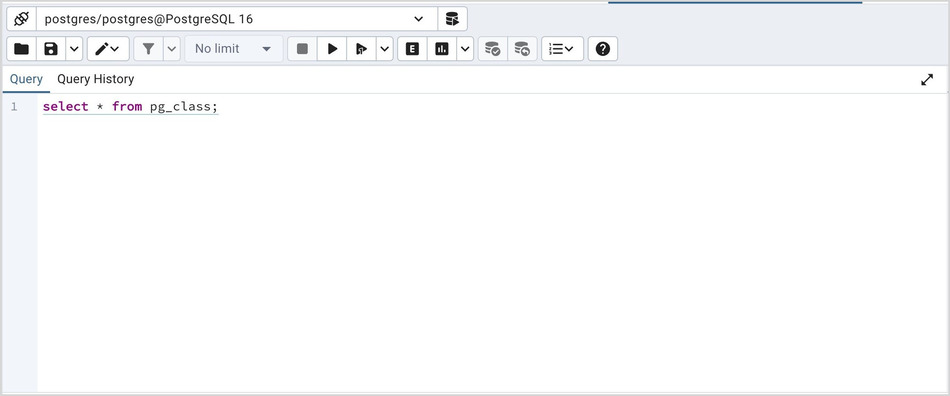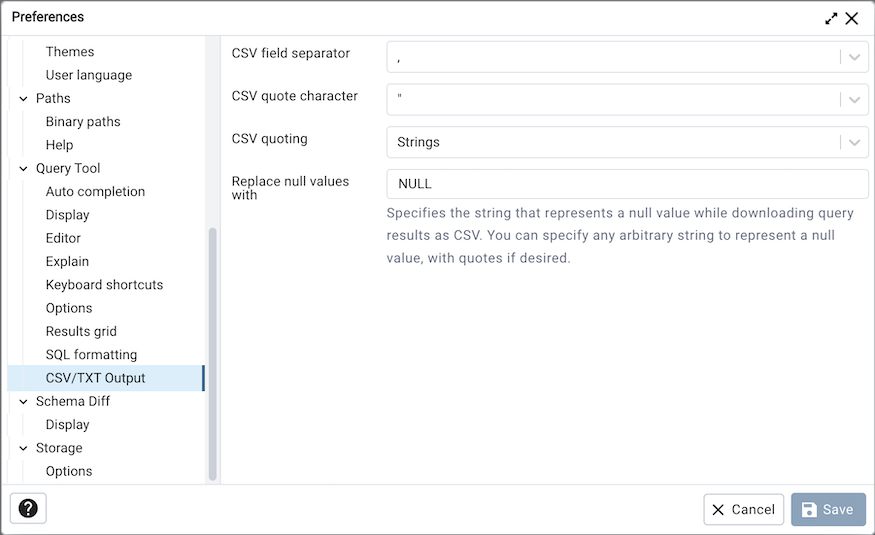
Then, to create a table quickly, select the Tools button at the top of the browser and click Query Tool. There are over 1 million rows in this CSV file. The data set that we'll use for this example is Traffic Violation data from Montgomery Country, Maryland from 2013 to 2017. You'll have the option to create a table here. If you have another database you want to use, you can use that, too.Ĭlick on Schemas > public and right click Tables. If this is a new deployment, you'll have postgres and compose. You can select the server and then select Databases and click on any database you've set up. Make sure you click on the SSL tab and select Require.ĭepending on what you named your server in the Create window, you'll see something like the following in your left pane. Now, add your database information into the Create window under the connection tab. Next, start up pgAdmin and add a Compose for PostgreSQL database by clicking Servers > Create > Server from the left pane. Setting things upįirst download and install pgAdmin 4. In this example, we'll show you how to briefly set up pgAdmin, upload some data, and use the geometry viewer to view your geospatial queries in pgAdmin. The geometry viewer was built thanks to a Google Summer of Code project by Xuri Gong, which allows you to view geometry and geography data in the pgAdmin browser on an OpenStreetMap map.

With the latest release, version 3.3, we got something really helpful for GIS developers: the geometry viewer. Since pgAdmin 4 was released last year, it's had some significant updates and bug fixes. In our last article on pgAdmin 4 version 1.6, we covered its installation and how to use it with Compose for PostgreSQL databases. In this GeoFile, we'll show you how to set up pgAdmin 4, import some data, add PostGIS, and start using the geometry viewer.

With the release of pgAdmin 4 version 3.3 comes the geometry viewer that will display your geometry (or geography) data on OpenStreetMap. GeoFile: pgAdmin 4 and the Geometry Viewer geofile pgadmin postgresql Free 30 Day Trial SELECT show_cities_multiple2 ( 'ca_cur', 'tx_cur' ) ĬOMMIT Processing a Result Set from a. Procedure that accepts cursor names as parameters CREATE OR REPLACE FUNCTION show_cities_multiple2 (ref1 refcursor, ref2 refcursor ) RETURNS SETOF refcursor AS $$īEGIN OPEN ref1 FOR SELECT city, state FROM cities WHERE state = 'CA' - Open the first cursor RETURN NEXT ref1 - Return the cursor to the caller OPEN ref2 FOR SELECT city, state FROM cities WHERE state = 'TX' - Open the second cursor RETURN NEXT ref2 - Return the cursor to the caller END You can also redesign the function, and pass all cursor names as parameters to get predefined cursor names: So to fetch data, you can use a separate FETCH statements for each cursor.


If you call a procedure that returns multiple result sets in PSQL tool, pgAdmin Query tool or another function, the query returns cursor names:


 0 kommentar(er)
0 kommentar(er)
